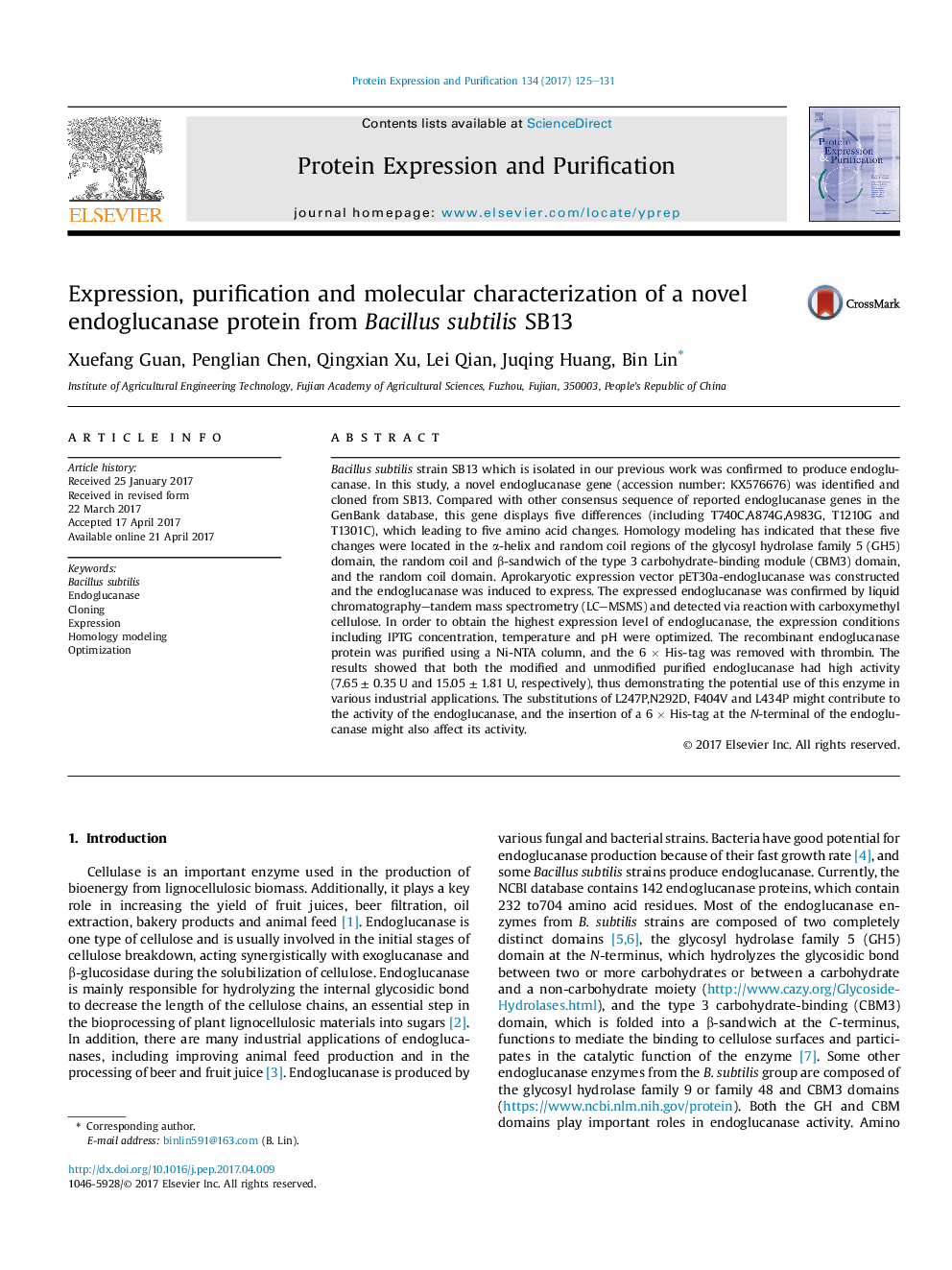| Article ID | Journal | Published Year | Pages | File Type |
|---|---|---|---|---|
| 5516079 | Protein Expression and Purification | 2017 | 7 Pages |
•A novel endoglucanase gene with five sites dissimilar was cloned and expressed from B. subtilis SB13.•The five changes were located in the GH5, CBM3, and random coil domain.•The expression conditions including IPTG concentration, temperature and pH value were optimized.•Both the modified and unmodified purified endoglucanase had high activity. The insertion of a 6 × His-tag might affect the activity.•The substitutions at the amino acid sites 740, 874, 1210 and 1301 might be related to this high activity.
Bacillus subtilis strain SB13 which is isolated in our previous work was confirmed to produce endoglucanase. In this study, a novel endoglucanase gene (accession number: KX576676) was identified and cloned from SB13. Compared with other consensus sequence of reported endoglucanase genes in the GenBank database, this gene displays five differences (including T740C,A874G,A983G, T1210G and T1301C), which leading to five amino acid changes. Homology modeling has indicated that these five changes were located in the α-helix and random coil regions of the glycosyl hydrolase family 5 (GH5) domain, the random coil and β-sandwich of the type 3 carbohydrate-binding module (CBM3) domain, and the random coil domain. Aprokaryotic expression vector pET30a-endoglucanase was constructed and the endoglucanase was induced to express. The expressed endoglucanase was confirmed by liquid chromatography–tandem mass spectrometry (LC–MSMS) and detected via reaction with carboxymethyl cellulose. In order to obtain the highest expression level of endoglucanase, the expression conditions including IPTG concentration, temperature and pH were optimized. The recombinant endoglucanase protein was purified using a Ni-NTA column, and the 6 × His-tag was removed with thrombin. The results showed that both the modified and unmodified purified endoglucanase had high activity (7.65 ± 0.35 U and 15.05 ± 1.81 U, respectively), thus demonstrating the potential use of this enzyme in various industrial applications. The substitutions of L247P,N292D, F404V and L434P might contribute to the activity of the endoglucanase, and the insertion of a 6 × His-tag at the N-terminal of the endoglucanase might also affect its activity.
